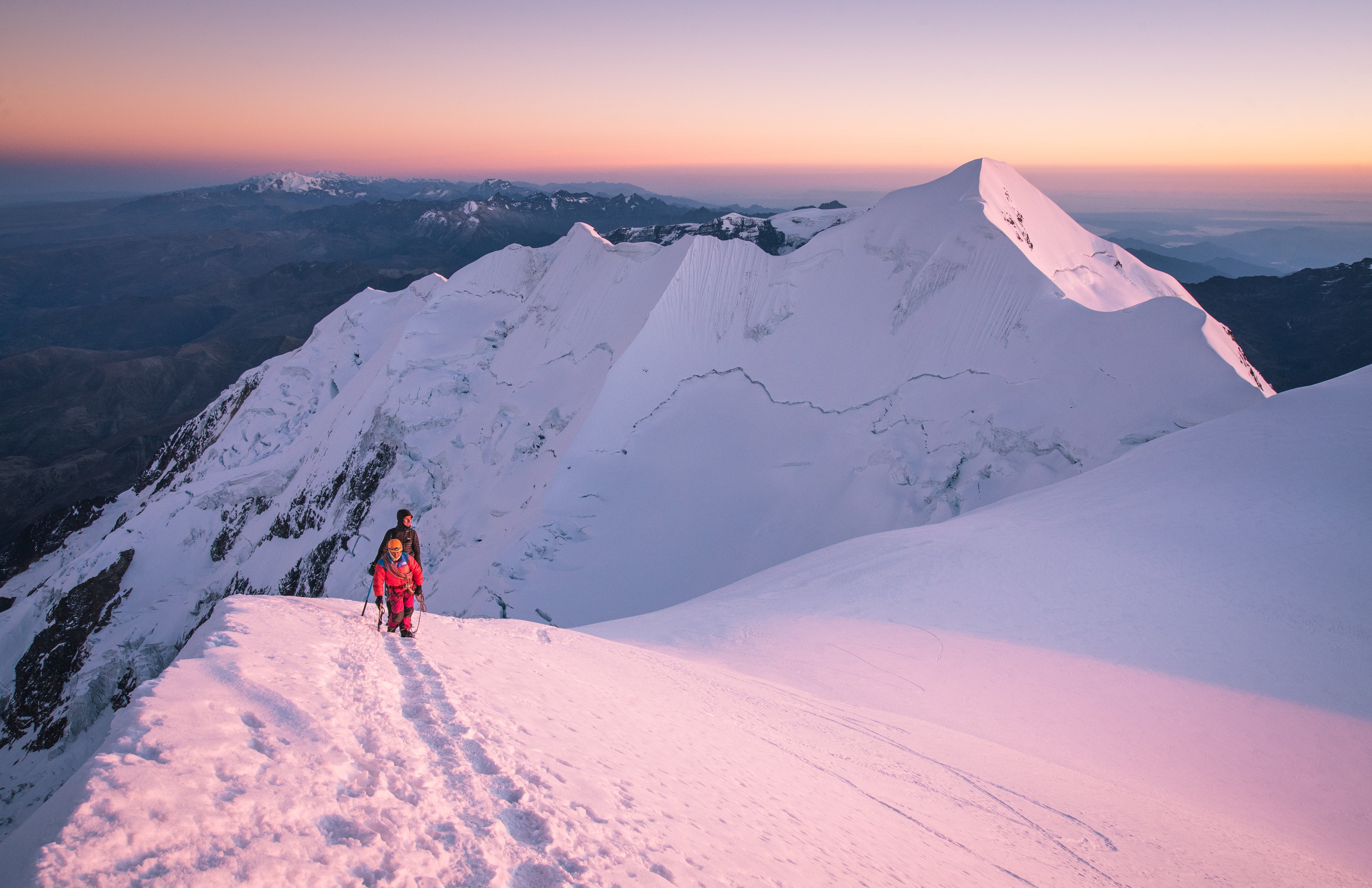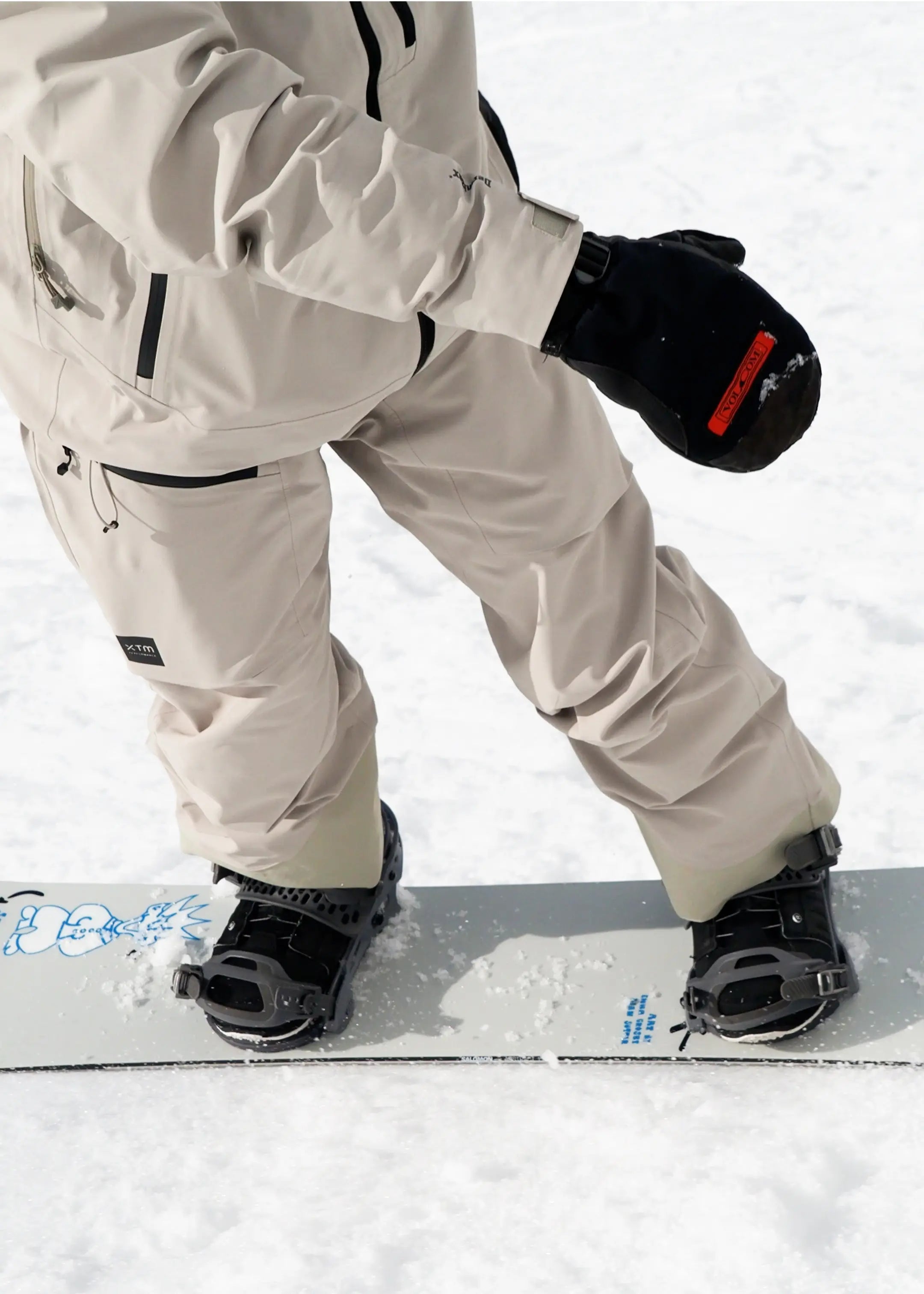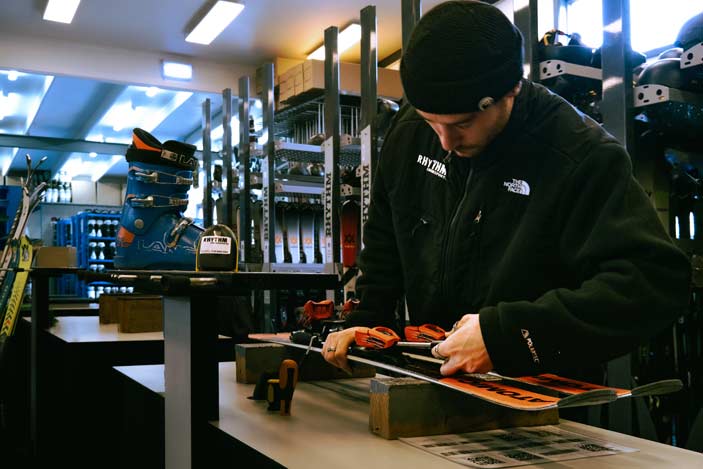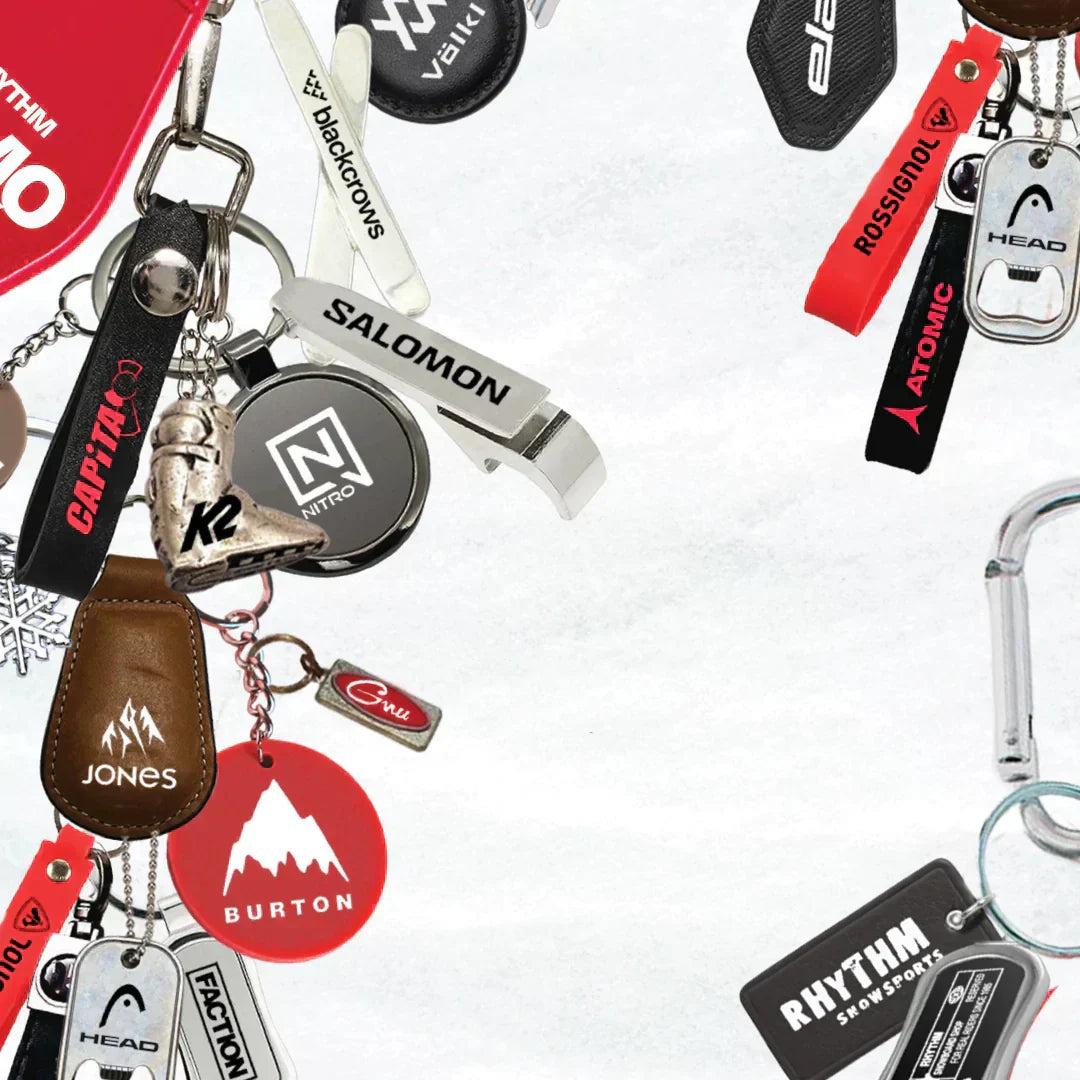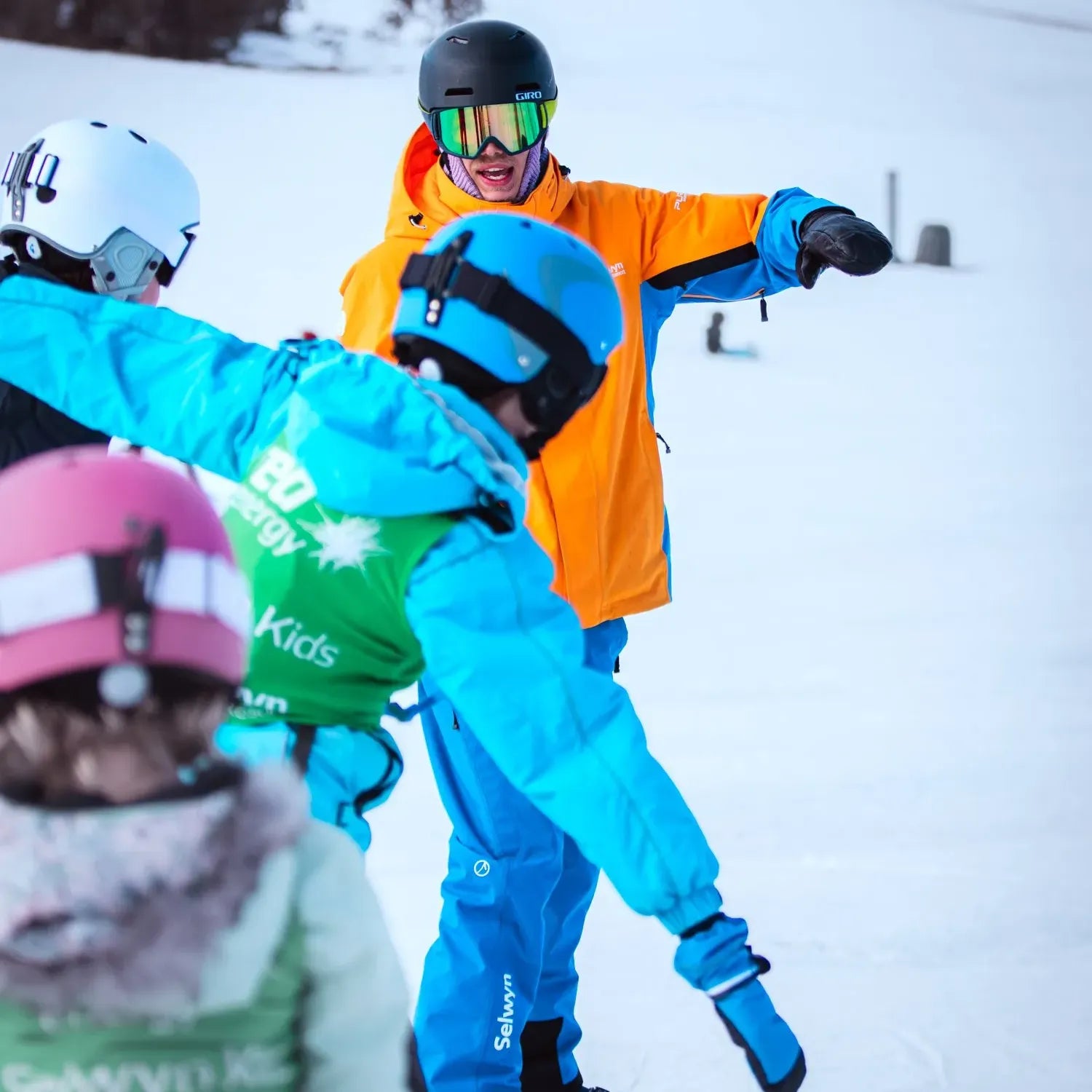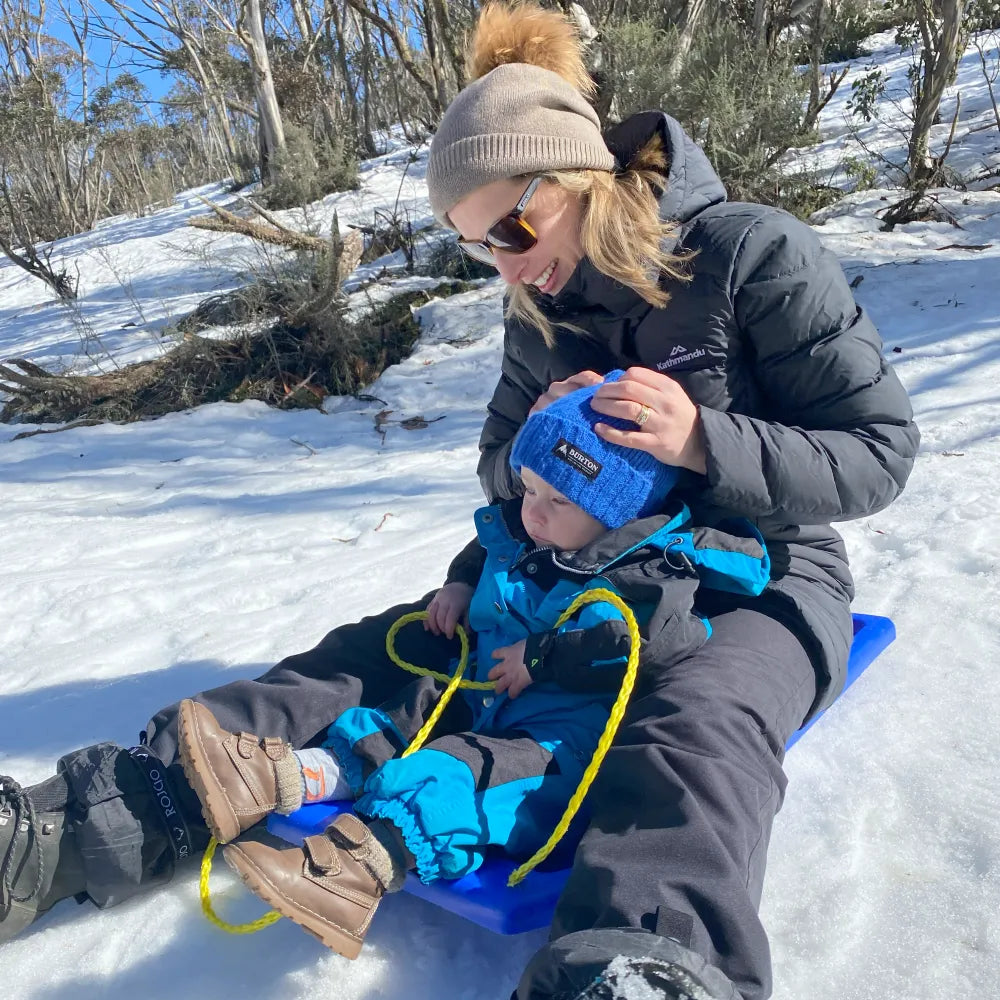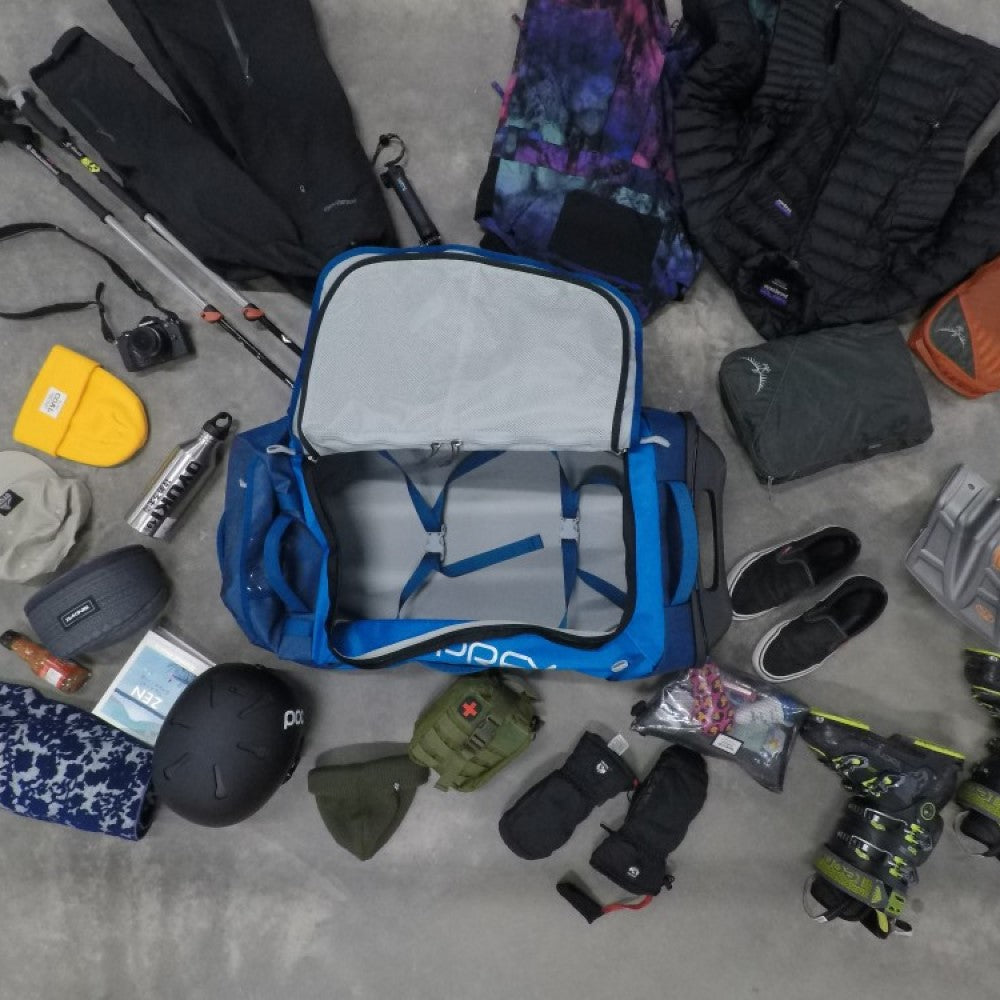Cold, wet hands are the quickest way to cut your snow day short. After decades of helping snow lovers find the perfect gear, our team knows what works (and what doesn't) in Australian conditions.
Do You Need Gloves for Skiing?
Absolutely! Whether you're skiing, snowboarding, or just playing in the snow, proper gloves or mitts are essential for warmth, safety, and comfort. Frostbite can happen faster than you think, and cold hands make it hard to grip your gear properly.
Gloves vs Mittens - Which One is Better for Skiing or Snowboarding?
This is probably the most common question we get, and honestly, it comes down to what matters most to you: warmth or dexterity.
Gloves provide more dexterity, making it easier to grip things like adjusting your goggles or using zippers. Mittens will keep your hands warmer because your fingers are all in one pocket and share warmth.
If you're adjusting the gear a lot, gloves might suit you. If you run cold or just want to stay warm in the chair, mittens are usually the better choice.
Which is Better for Different Snow Activities?
The extra dexterity of gloves is useful for times when you're more hands-on, like backcountry touring, gripping ski poles, or making the perfect snowball.
Personally, many of our team have always used mitts when snowboarding. You don't need the extra dexterity to do up your bindings. It might be counterintuitive, but some of us run hot, and although mittens are generally warmer, we find them easier to rip on and off when we want to dump heat at the end of a run.
At the end of the day, it really is a personal preference.
What About Hybrid Options?
Trigger mitts or styles like the Oyuki Shaka Mitt are a mix between a glove and a mitt. Most of your fingers are together, except for a couple of fingers (like the forefinger and thumb in a trigger mitt) to help add dexterity. They are warmer than a glove but more functional than a mitten. Great for those who want a balance of warmth and usability.
There's also some seriously cool tech hitting the market. Death Grip is a new brand for us at Rhythm, and they have what they call Hand Out technology, which lets you unzip the back of your glove/mitt and quickly free your fingers, handy for touring, snapping photos, or dumping heat.
Materials & Insulation - What Ski Gloves Are Made Of
Most ski gloves and mittens are built with a few key components: the shell material, waterproof membrane, insulation, lining, and palm reinforcement.
Shell Materials: Synthetic vs Leather
Synthetic gloves are generally made from fabrics like nylon or polyester and treated with a waterproof coating. They're lightweight, dry quickly, and are usually more affordable than leather.
Leather gloves are very durable and naturally water resistant. Once broken in, they are very pliant, and you will have a glove or mitt that is perfectly shaped to your hand.
Make sure to treat leather with a waterproofing wax regularly, especially if you're using them in slushy Aussie conditions. This will help prolong the life of your leather!
Are Fleece Gloves Suitable for Snow?
Fleece gloves are usually intended for use in cold conditions where you will have minimal contact with snow or moisture. Because they aren't waterproof, once they get wet they will lose their thermal properties. They're great for layering under your main gloves, but not ideal as your primary snow gloves.
Insulation Types
Similar to your ski jacket, gloves and mitts will have either synthetic or wool insulation. Synthetic generally performs better when wet, is faster drying, and is usually more affordable. Wool has a higher warmth-to-weight ratio and is naturally odour-resistant.
Are Ski Gloves Waterproof?
Wet hands quickly become cold hands. The major cause of wet ski gloves is actually your own perspiration and lack of breathability from the inside of the glove.
Australia has arguably some of the most variable weather conditions in the world. Waterproofing and breathability are super important here because generally, we have very wet, slushy snow and it can go from super cold and windy weather one day to warm bluebird days the next. Keeping your hands warm and dry is key to making your time on the hill more enjoyable.
Waterproof Membranes to Look For
In a waterproof breathable glove, the membrane is placed between the outer shell and the insulation. It has microscopic pores small enough to keep liquid water out but large enough to allow water vapour to escape.
These are built-in barriers that stop moisture from getting in while still letting sweat escape. Gore-Tex, Hipora, and DryRide are some of the most common waterproof membranes you will find in gloves. How waterproof and breathable a glove or mittens is depends primarily on the membrane quality.
How Should Ski Gloves Fit?
Getting the fit right is crucial. Your gloves and mitts should fit snug, not too tight or too loose. Gloves that are too tight could cut off circulation and make your hands cold. Gloves that are too big lose dexterity and warmth.
Your fingers should lightly touch the end of the glove/mitt with a little bit of space for wiggle room. You should be able to make a fist easily and your palm should be completely inside the cuff so your wrist remains covered.
Do Ski Gloves Go Over or Under Your Jacket?
Make sure there are no gaps for snow or wind to get in. Under gloves go underneath your jacket cuff, while over gloves go on top. If you use liners, ensure you try them on with your gloves or mitts to make sure there's enough room.
Top Features to Look For in Snow Gloves
All these features can make a big difference out on the mountain:
Wrist Straps (Absolutely Essential!)
For many of our team, wrist straps are an absolute must. As someone who frequently takes off their gloves, wrist straps have saved gloves from being dropped from the chair or falling out of jacket pockets many times. Trust us on this one.
Long Cuffs
Long cuffs are designed to go over your jacket sleeve rather than under, which is ideal for people who take their gloves/mitts on and off because they're less fiddly.
Touchscreen Compatibility
Touchscreen compatibility can be handy if you need to use your phone frequently. It's not quite as good as using your bare hands, but it can be useful if you need to quickly answer a call or take a couple of pics while you're on the mountain. Just don't expect to type out long messages easily.
Removable Liners
Removable liners are a great bonus in gloves and act like thermals for your hands. They're great for use in variable weather conditions and give you options for layering.
Reinforced Palms
Reinforced palms are definitely worth it if you're constantly using your hands. Snowboarders doing up bindings all day tend to go through gloves more quickly, so reinforced palms help you get more bang for your buck. Most gloves have grips and reinforcements on palms, fingertips, and thumbs for better pole grip and edge protection.
Best Ski Gloves for Different Riders
First-Timers to the Snow
Look for something that is as waterproof as your budget will allow. Beginners usually have much more hand-to-snow contact, and the more waterproof your gloves, the longer you'll be able to stay out and be comfortable.
Kids and Families
The same waterproofing rule applies to kids' gloves and mitts. Kids love making snowmen and throwing snowballs, and the more waterproof their gloves, the fewer tears on the hill.
Alternatively, it might be more cost-effective to get two more reasonably priced gloves so that you can switch them out when one gets too wet.
Next to waterproofing, ease of use should be top priority. Kids can have trouble getting fingers into gloves, so sometimes mitts are a better choice. Or try to find something with a wide opening or zip to make it easier to get on and off. Wrist straps are an added bonus to stop tiny mitts/gloves from wandering off.
Advanced Riders or Backcountry Users
If you're very active and more likely to run hot, something that is lighter and more breathable will be more suited.

How to Wash Ski Gloves (Without Ruining Them)
Hand wash with lukewarm water and mild soap (tech wash is ideal). Gently scrub inside and out, rinse well, then gently squeeze out excess water - don't wring them! Air dry at room temperature, stuffing with newspaper to help wick moisture faster.
Avoid: Hot water, machine washing (unless label says okay), harsh detergents, and putting near heaters.
Drying After a Snow Day
Bring them inside to a warm, dry area overnight. Hot tip: Don't leave gloves in your car or locker room overnight, they'll freeze and still be wet in the morning!
For leather gloves, treat with waterproofing wax once dry to keep them supple and water-resistant.
Final Tips from the Rhythm Crew
Common Mistakes to Avoid
Some common mistakes are buying gloves/mitts that are too small and not checking for waterproofing. Sometimes, buying the $20 gloves can seem like a good idea, but these gloves aren't designed for much contact with snow, so it won't take long for them to get very wet.
It's important to note that one glove or mitt can't do it all! A highly insulated glove or mitt could be too warm on a hot spring day, and a thinner glove will be more suitable for hiking but will leave you freezing in a mid-winter snowstorm.
Don't Forget About Liner Gloves
Liner gloves are thin, usually lightweight gloves that you can wear inside your main gloves or mitts for extra warmth. They're great for layering on really cold days, and some have touchscreen compatibility so you can take your mittens off without going totally barehanded. Just remember, if you plan to use liners, make sure your main glove or mitt has enough room to accommodate them without getting too tight.
Try Before You Buy
If in doubt, come in and try a few on. What works for one person might be totally different for the next; how they feel in your hands makes a big difference. We're always happy to walk you through the options and help you find the perfect pair for your needs and budget.
Whether you're gearing up for your first snow trip or upgrading your current setup, check out our full range of gloves and mitts and other snow accessories. Our team is always stoked to help you get the most out of your time on the mountain.
Posted by Rhythm Snowsports on

